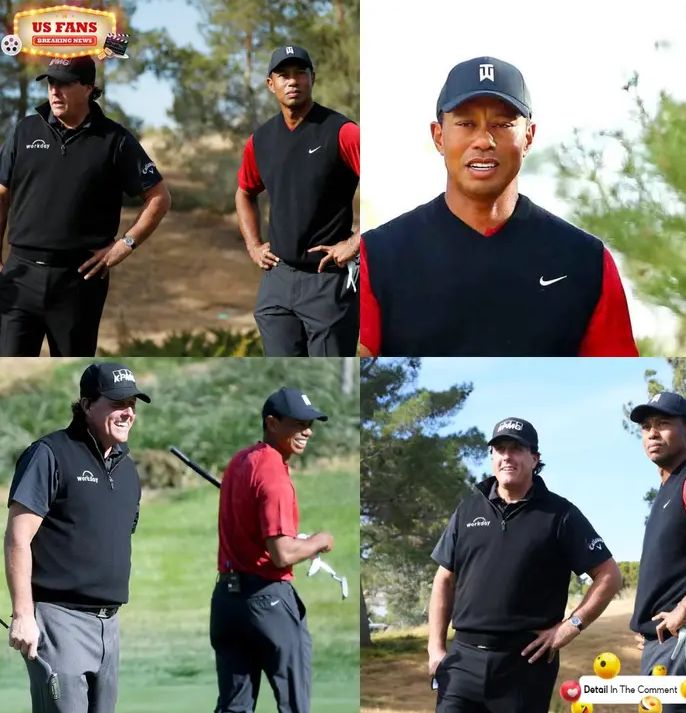Tiger Woods and Phil Mickelson partnered for a press conference aimed at revealing the truth of the Olympic judges’ severe verdicts.

It is hard to fathom that despite being the top two players in the world for an extended period, they have never had a chance to compete at the Olympics.
It’s true – neither Phil Mickelson nor Tiger Woods have ever played for Team USA, even at the height of their careers.
At certain points, golf was synonymous with Woods and Mickelson. Sadly though, due to the timing of their careers they were unable to participate in Olympic competition.
Surprisingly, golf made its first appearance in the Olympics during the distant summer of 1900 in France.
The event persisted for another edition in 1904 but was subsequently ignored and overlooked for more than a century. Golf re-emerged at the 2016 Rio Games after an interval of 112 years.
Nevertheless, at that point in time, the reputations and rankings of both Mickelson and Woods were on a downward trend.
For 13 consecutive years, beginning in June of 1997 and ending two years prior to the Rio Games, Woods maintained his coveted number one ranking.
Since 2001, Mickelson also held the second spot for a total of 270 weeks and maintained his position among the highest-rated players for an extended period.
Despite their accomplishments, they were rendered ineffective when pitted against the rigorous Olympic qualifying standards. Woods’ injuries and Mickelson’s advancing age, coupled with his affiliation to LIV Golf, gradually diminished their chances of securing a spot in the Olympics.
The Olympic Rules and International Golf Federation state that up to four players from any given country within the top 15 world rankings will be eligible for the Olympics. Players beyond this rank may still qualify based on their ranking, with a maximum of two players per country that doesn’t already have multiple representatives in the top 15.
Upon golf’s return to the Olympics, Woods and Mickelson had been marred by their age and eclipsed by younger generations of star athletes. Compounding matters were Olympic qualifications that did not work in their favor. Similarly, fans of DeChambeau felt indignant when a top-performing LIV golfer was unable to represent Team USA this year.
In 2016, when golf was reintroduced as an Olympic sport, there was a debate on its suitability for inclusion. Here are the essential details to comprehend about it.
In 2016, Michael Rosenberg, the renowned senior writer at Sports Illustrated, enumerated various reasons why golf ought not be an Olympic sport. One of his critical points was that all Olympic sports must regard participation as a prime honor; yet for most critics and players alike in golfing circles, major titles have always held greater significance than any other event on this platform.
He highlighted the Olympic sport’s emphasis on fielding top players, but noted that even current athletes such as Tiger Woods and Mickelson face this judgment. However, due to LIV Golf being a distinct entity from PGA Tour and European Tour leagues, OWGR cannot assign specific score points for inclusion. Consequently, numerous skilled LIV golfers miss out on opportunities to rise to the top of their game – Bryson DeChambeau is currently a prime example of this issue.
Rosenberg noted that the other prerequisites, such as a quality field and Olympic inclusion for growth, are inadequate predictors. Golf has continued to expand well beyond 100 years without participation in the Olympics. Additionally, criticisms from fans and experts contest that only having room for 60 players at the games is unjustified.
Is it actually such a negative thing? Golfers have been imbued with an unparalleled sense of elation and thrill to represent their nations during the last three Olympic Games. It goes without saying that this level of excitement has broken all golfing records, culminating in a 7-way playoff. The enthusiasm for patriotism is palpable amongst both competitors and supporters alike!
